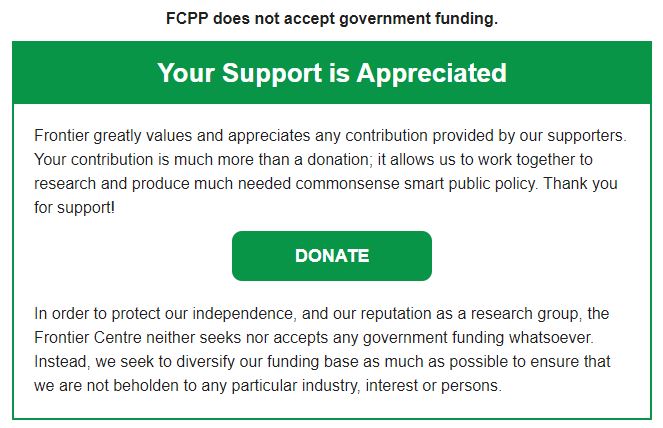One of the eternal questions of public policy is: should governments get into bed with private businesses? Whether it is called a Public-Private Partnership, buying a controlling interest for taxpayers, investing in the technologies of tomorrow or just, avoiding a business failure on our watch, the debate over whether or not the overall idea of government investing in the private sector is a good idea never seems to end.
The question is eternal not because we have no answer, but because supporters of expansive government simply won’t accept the answer that reality has to offer. The history of government interventions in picking winners and losers in a market-based economy is absolutely abysmal.
The refusal to admit reality in this context is a non-partisan thing since politicians of all political stripes can’t resist the urge to meddle in markets. Whether it’s bailing out the fossil fuel sector (as in Alberta) or investing in the technologies of tomorrow (wind, solar, hydrogen) that are supposed to kill the fossil fuel sector in Canada, government investment in private sector activities always finds a welcome audience in government.
But coming only weeks after the death of Alberta’s big “save KXL” investment (an NDP idea), we now have a Conservative Alberta government deciding to go in with taxpayer money to bail out a bad oil sands investment deal. How bad was it? Even before the new salvage investment plan, the government chalked up a debt of $26 billion dollars on the deal.
To make an interminably long story short, back in 2007, after the Stelmach government’s review of fossil fuel royalty structures in Alberta, it was decided that it might be a good idea to buy a stake in a proposed bitumen refinery to create a new guaranteed market for Alberta’s oil sands sector. The basic idea was to take bitumen, refine it into low-sulphur diesel fuel, pipeline diluent and other lower-weight hydrocarbons (such as propane and butane) and sell them to domestic industries. As a side-benefit, the theory was that the refinery would capture carbon dioxide emissions and reduce the climate change footprint of the bitumen combusted in the process.
Sounds great, right? Like a win-win-win sort of thing! As Yogi Berra once said, “In theory, there is no difference between theory and practice. In practice, there is.” And putting the theory for the Sturgeon Refinery into practice serves as a good example of the problems that happen when the government climbs into bed.
As Andrew Leach pointed out in a scathing report last year, the poor investment choices started very early in the process, when the government of the time decided that rather than take their profits from their investment (paid via reduced royalties on bitumen) back out in cash, they would instead take their profits out downstream, in products produced by the refinery years later.
And additional bad governmental decisions followed on that one, such as a decision to not simply promise bitumen for delivery to the refinery, but rather to guarantee a fixed rate of return to the not-yet operating refinery on its capital and operating costs to process the government’s bitumen. Of course, the costs of building and operating the refinery ballooned over time, taking the government’s guaranteed return-on-investment promise with it, ultimately saddling Alberta with the $26 billion debt mentioned earlier. There’s more to the story, of course, but flash forward to today and the government of Alberta is going to throw nearly another billion dollars on top of the $26 billion debt, by purchasing a 50 per cent equity stake in the refinery from North West Refining, ostensibly keeping the scheme going for another ten years and giving the government a greater decision-making role in the project. Because, we know how well their previous decision-making turned out.
Coming on top of the Alberta government’s decision to invest $5 billion dollars in the Trans Mountain Expansion Project (ka-ching!) and the $26 billion dollars incurred in the past for the North West Refinery Project, what’s another billion dollars, in the name of “saving the taxpayer’s investment?”
There’s an expression for that kind of thinking, which is that one should not “throw good money after bad.”
Kenneth P. Green is a senior fellow at the Frontier Centre for Public Policy.
Photo by Annie Spratt on Unsplash.



